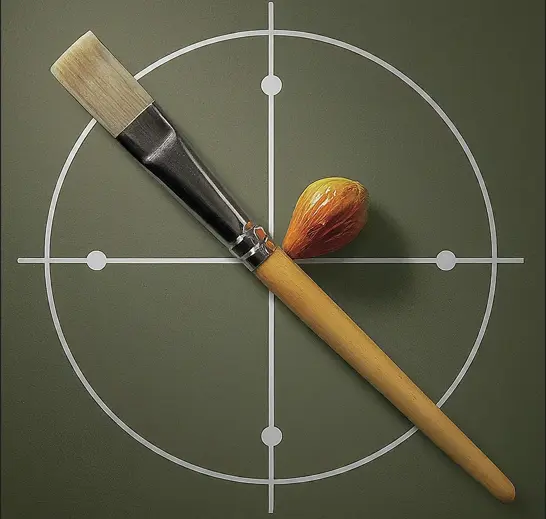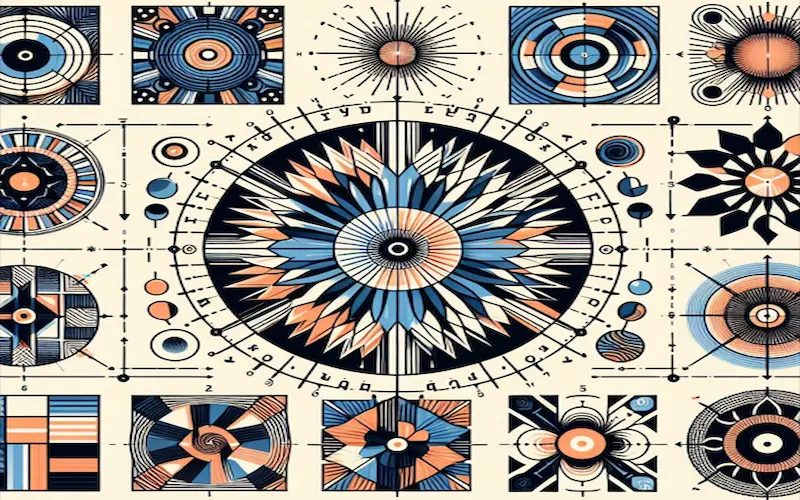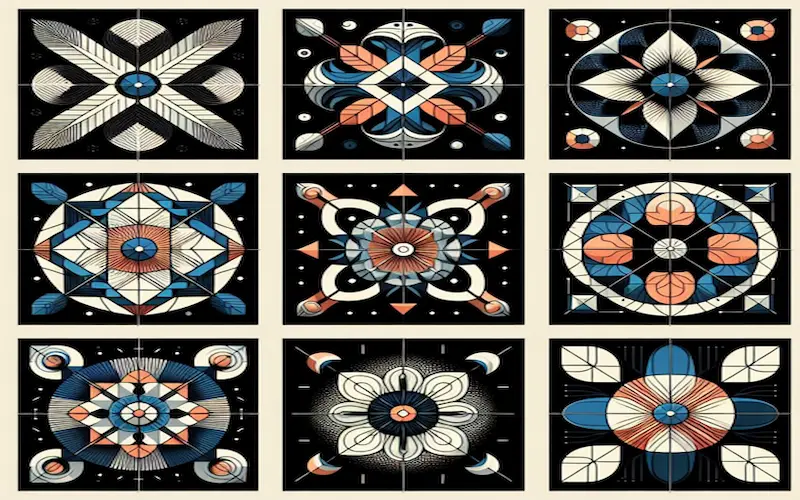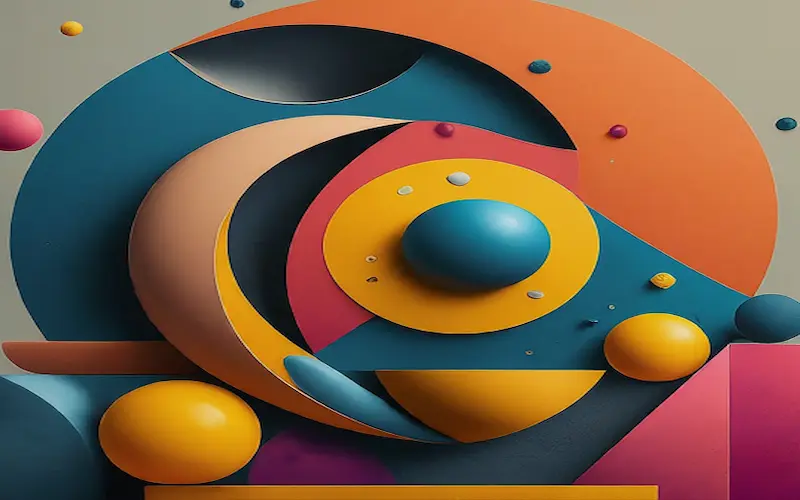Mastering the Art of Balance: How is the Rule of Thirds Used in Design?
Published: 7 Mar 2024
The rule of thirds in design is a technique of dividing a canvas into nine equal parts by two equally spaced horizontal lines and two equally spaced vertical lines. This grid provides a framework for arranging compositional elements in a way that is pleasing to the eye. The intersections of these lines, known as power points, are strategic spots where crucial elements can be placed to create interest and tension.
As someone who has grappled with the challenges of visual composition, I have come to appreciate the simplicity and effectiveness of the rule of thirds.


Understanding the Concept of Balance in Design
Balance is a fundamental concept in design that refers to the distribution of visual weight within a composition. It’s about achieving a sense of stability and order, ensuring that no single element overpowers others or creates a visual discord. In my designs, I strive for a seamless blend of symmetry and asymmetry, understanding that balance doesn’t necessarily mean mirroring one side with the other but instead distributing elements cohesively.
Balance is not just about placing objects but also about color, texture, and space. The rule of thirds aids in achieving balance by providing a structure that naturally leads to a well-distributed design. It encourages the eye to move across the design, creating a rhythm that makes the overall experience more engaging and harmonious.
The way I see it, balance in design is like a dance—every step, twirl, and pause has its place, contributing to the overall grace and fluidity of the performance. The rule of thirds is like the choreography that guides the movement, ensuring that each visual element has its moment to shine while contributing to the collective beauty.


The History and Origins of the Rule of Thirds in Design
The rule of thirds has deep roots in art and design history. Its origins can be traced back to the Renaissance when artists explored perspective and composition deeply. They sought ways to create a sense of order and harmony in their works, which led to the discovery of mathematical ratios and guidelines that could enhance the visual appeal of their paintings.
It was Sir Joshua Reynolds, an 18th-century artist, who mentioned the concept of the rule of thirds in his discourses on art. He observed how artists like Raphael used this principle to create focal points in their artwork. From these artistic beginnings, the rule of thirds gradually found its way into photography and design, becoming a fundamental guideline for contemporary creators.
The rule of thirds has endured due to its versatility and effectiveness. It resonates with a natural aesthetic sense that is hardwired into our perception. As a designer, I respect the rule of thirds’ historical significance and feel a sense of connection to the generations of artists and designers who have utilized this principle before me.


Exploring the Elements of the Rule of Thirds in Design
When I incorporate the rule of thirds into my designs, I engage with three core elements: the grid, the intersections, and the lines themselves. The grid acts as a scaffold for the composition, offering a guide that helps frame and structure the design space. This grid ensures that the elements are not randomly strewn across the canvas but thoughtfully placed to create a sense of order and flow.
The intersections, or power points, are the most critical aspect of the rule of thirds. These are the spots where the lines intersect and are the prime real estate for placing essential elements. When I position a subject or critical detail at one of these intersections, it naturally becomes a focal point, drawing the viewer’s eye and engaging their attention.
Lastly, the lines themselves guide the flow of the design. Horizontally, they can represent the earth and sky or provide a sense of grounding and loftiness. Vertically, they can suggest stability or divide the space into manageable chunks. I use these lines to align elements and create a visual pathway that leads the viewer through the design.


Practical Examples of the Rule of Thirds in Design
To illustrate how the rule of thirds is used in design, let’s look at some practical examples. In web design, the rule of thirds can be applied to layout elements such as headers, navigation menus, and call-to-action buttons. By aligning these elements along the lines or intersections, I ensure that the most crucial information is where users naturally look first, leading to a more intuitive and user-friendly experience.
In graphic design, the rule of thirds can create balance in posters or advertisements. Placing the primary graphic or headline at an intersection can make it stand out, while supporting text and graphics can be arranged along the lines to maintain balance and direct the flow of information.
In photography, the rule of thirds transforms a snapshot into a compelling image. By positioning the subject off-center at an intersection point, I give the photo a sense of movement and life. The remaining space can include interesting backgrounds or negative space, adding context and depth to the image.
How to Apply the Rule of Thirds in Different Design Mediums
The beauty of the rule of thirds is its adaptability across various design mediums. In digital design, such as user interfaces and websites, the rule of thirds in design helps create aesthetically pleasing and functional layouts. By dividing the screen into thirds, I can place navigation, content, and calls to action in strategic locations that are easily accessible and visually balanced.
In print design, the rule of thirds guides the arrangement of elements on the page, whether a brochure, a magazine spread, or a poster. By considering where the grid lines and intersections fall, I can effectively create focal points and guide the reader’s eye through the content.
Even in motion design, such as animations and video production, the rule of thirds plays a crucial role. Considering where elements appear and move within the third grid, I can create more dynamic and engaging visuals that draw the viewer in and guide their attention throughout the scene.
Tips and Techniques for Using the Rule of Thirds Effectively in Design
I’ve developed several tips and techniques for effectively using the rule of thirds to enhance my designs.
- I always start with a grid overlay, which serves as a reference throughout the design process. This helps me visualize where the elements should be placed for maximum impact.
- I pay close attention to the balance between elements. While the rule of thirds is a great starting point, it’s essential to consider the weight of different components and how they interact within the grid. I often adjust the elements’ size, color, and position to create a balanced composition.
- I use the rule of thirds to create depth and interest. By placing elements along the grid lines or at intersection points, I can lead the viewer’s eye through the design and highlight the most critical aspects.


Common Misconceptions About the Rule of Thirds in Design
Despite its widespread use, I’ve needed clarification about the rule of thirds. Some believe that it’s a rigid rule that must be followed strictly, but in reality, it’s a flexible guideline that can be adapted to the needs of the design. It’s important to remember that the rule of thirds should serve the design, not vice versa.
Another misconception is that the rule of thirds is the only way to achieve balance in design. While it’s a powerful tool, other compositional techniques can create visual interest. I consider the rule of thirds one of many tools in my design arsenal.
Lastly, using the rule of thirds will automatically make a design good. However, the thoughtful application and the combination with other design principles result in compelling compositions. The rule of thirds is a starting point, not a magic solution.
The Impact of the Rule of Thirds on User Experience
The rule of thirds extends beyond visual appeal and plays a significant role in shaping the user experience. Guiding the placement of elements helps create intuitive interfaces where users can easily find what they’re looking for. In my designs, I aim to direct the user’s attention to critical information and actions, making their interaction with the product smooth and effortless.
In visual storytelling, the rule of thirds helps create a narrative flow that is easy for the viewer to follow. By strategically placing visual cues, I can guide the user through a story, whether it’s on a website, in a video, or within an interactive experience.
Ultimately, the rule of thirds helps create designs that are not only visually balanced but also user-centric. It’s a principle that supports the overall usability and enjoyment of the designed product, contributing to a positive and memorable user experience.
Conclusion: Embracing the Power of Balance in Design Through the Rule of Thirds
Throughout my career, I’ve learned that balance is not just a visual nicety. It’s a foundational aspect of effective design. The rule of thirds in design has been an instrumental guide in achieving that balance, providing a framework that enhances my projects’ visual impact and user experience. By understanding and applying this principle, I’ve created designs that are aesthetically pleasing but also functional and engaging.
As I continue to explore the depths of design, I embrace the rule of thirds as a powerful ally in the quest for balance. Whether you’re a seasoned designer or just starting out, I encourage you to delve into this principle and discover how it can transform your work. Remember, the rule of thirds is more than a rule; it’s an art form that, when mastered, can elevate your design to new heights.



- Be Respectful
- Stay Relevant
- Stay Positive
- True Feedback
- Encourage Discussion
- Avoid Spamming
- No Fake News
- Don't Copy-Paste
- No Personal Attacks



- Be Respectful
- Stay Relevant
- Stay Positive
- True Feedback
- Encourage Discussion
- Avoid Spamming
- No Fake News
- Don't Copy-Paste
- No Personal Attacks





